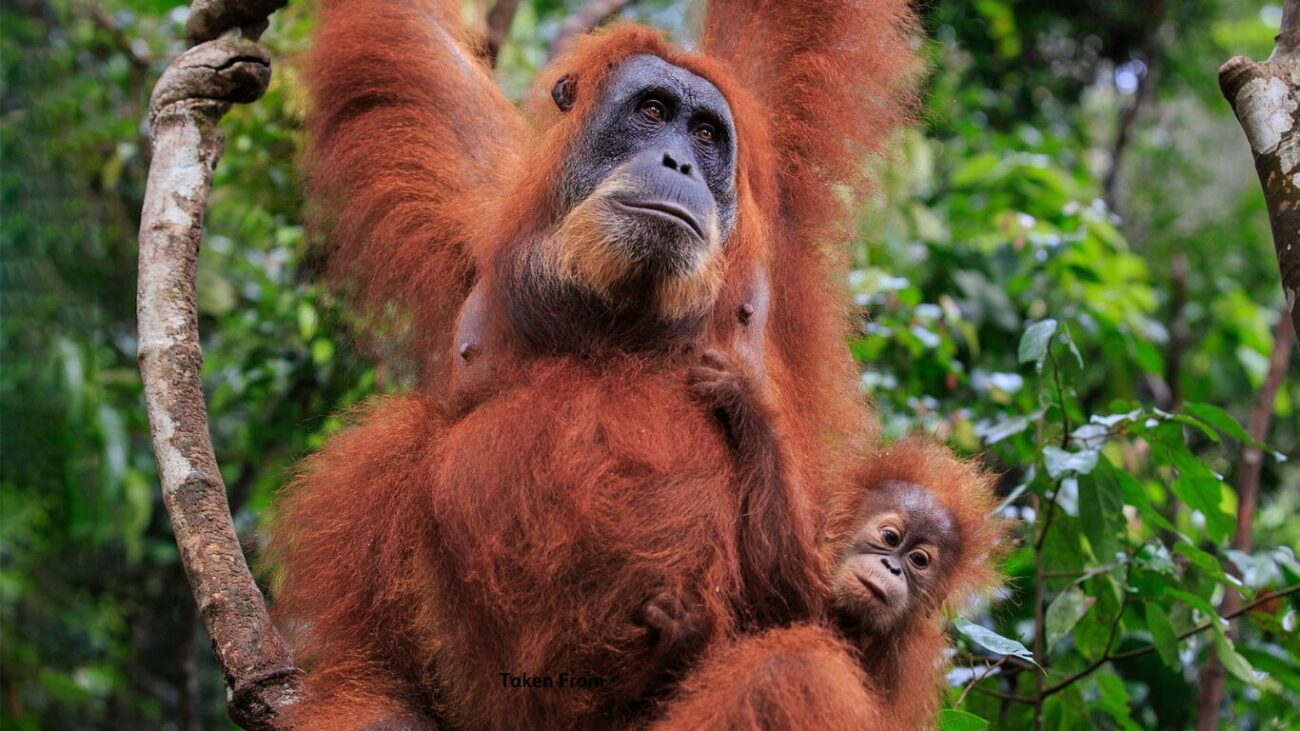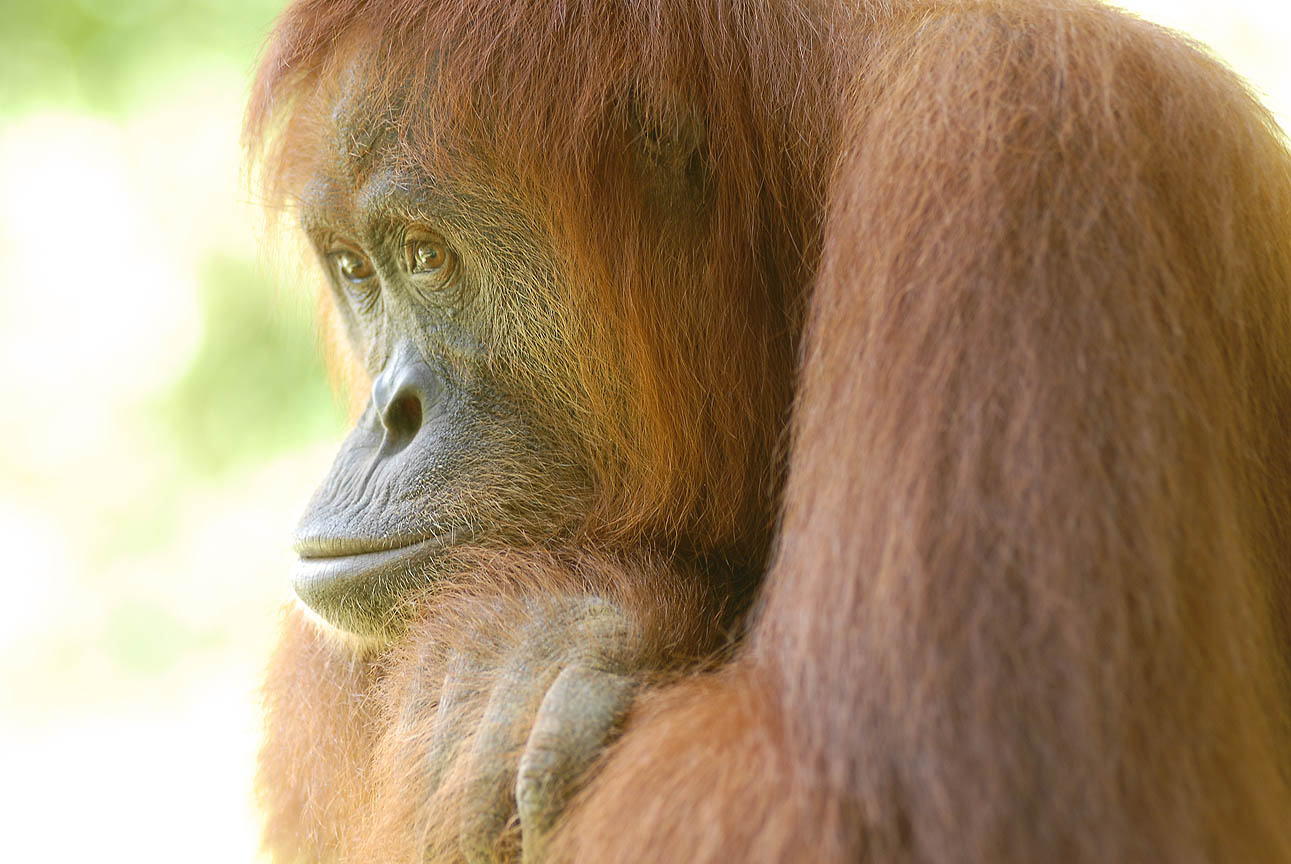
Orangutans have the slowest life histories of any mammal. This means orangutan mothers are exceptionally dedicated to their young. However, a slow life history also means orangutans populations are highly vulnerable to environmental shocks, such as habitat loss or poaching.
We must protect wild orangutans, connect fragmented forests and restore degraded habitat – to safeguard these incredible creatures for generations to come. Here are our favourite facts about orangutans mothers!
Breastfeeding is difficult to study in orangutans, who nurse their young high up in the rainforest canopy, often hidden in their nests. Little was known about the weaning age in wild orangutans. In 2017, researchers analysed barium levels in orangutan teeth, to track milk consumption. They discovered that these incredible primates nurse their babies for a whopping 8 – 9 years, the longest of any mammal.
Orangutans are solitary most of the time. Sometimes though, mothers will travel across the forest to meet, feed together, and allow their children to play, like a jungle crêche!
High up in the rainforest canopy, orangutans mothers have been known to create a “living bridge” between trees. By using their long limbs to connect branches, they help their babies cross gaps that are too wide for them to navigate alone. Orangutans are incredibly strong, and mums put this strength to good to use to help their babies survive!
Like humans, orangutan mothers wean their offspring. She will prepare food by grinding it up with her teeth, then passing it onto her baby to chew. The transition to weaning happens on and off, depending on food availability. This cyclical nursing strategy is rare in mammals and shows how adaptive orangutans can be.
Some orangutan mums are more protective, while others are more playful or more hands-off—just like humans. For example, some mothers show high levels of energetically-costly behaviours (like carrying), while others were less frequent. They adapt their parenting as their children grow, showing behavioural plasticity—which is crucial for survival.
You can help protect Sumatra's Orangutans. Click to get updates
